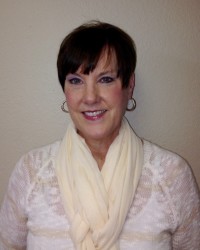A Pinch Here, A Dash There Adds Up
Americans love their salt. A pinch here, a dash there, all adds up to too much. All that salt really does a job on your health – and not in a good way!
The American Heart Association indicates that most healthy people can consume 2,300 milligrams (mg) daily, or the equivalent of about 1 teaspoon. However, some individuals, especially over the age of 50, should attempt to hold it to 1,500 mg. The main reason is that too much salt raises your risk for high blood pressure, which can increase your risk of stroke, heart disease, and kidney problems.
If you salt your food without first tasting it, you are probably consuming too much sodium. The average American consumes about 3 teaspoons per day when we take into account the sodium contained in foods, naturally occurring sodium, and sodium added at the table.
There are several sneaky sources of sodium. About 75% comes from restaurant meals and packaged foods. The biggest culprits include soup, salad dressings, frozen entrees, cold cuts, cereal, breads and crackers, cottage cheese, and other cheeses.
Nutrition labels can be a big help in determining the amount of sodium in foods. Check the labels to keep tabs on your intake. If the sodium content is 5% or less of the daily value (DV), that means it is low in sodium. If it contains 20% DV or more sodium per serving, that is considered high, so another option would be best.
So what does the packaging tell us? Many foods are marketed as low-sodium, reduced sodium, no salt added, lightly salted…this can be confusing. Here are the definitions of the terms according to the Food and Drug Administration:
- Very low sodium: 35 mg of sodium or less per serving
- Low sodium: 140 mg of sodium or less per serving
- Reduced sodium: at least 25% less sodium that the regular product
- Light in sodium or lightly salted: at least 50% less than the regular product
- No salt added: this product does not have added sodium, but may have naturally occurring sodium, so check the nutrition label.
There is a misconception that specialty salts are more nutrition. All salt has the same amount of sodium, but larger granules (like those of sea salt) mean you get more flavor in one granule, so you can use less when sprinkling it on top of foods. Some specialty salts, such as Himalayan pink salts have minerals, but they occur in such tiny amounts that you don’t get any health benefits.
When buying table salt, get the iodized variety. Your body needs iodine for thyroid health (the gland that influences metabolism, growth, and body temperature) and, if pregnant, for your baby’s brain development.
Dr. Janet Brill, author of Blood Pressure Down, suggests that a good option if you’re trying to reduce sodium intake when cooking at home, is using low-sodium salt. It’s a mix of sodium chloride (typical salt) and potassium chloride. This alternative tastes a little less salty.
What about children? More than 90% of children ages 4 to 18 get too much sodium. The upper limit is 2,300 mg for them, too, so pay close attention to their salt intake.
Twogether In Texas Marriage Education Workshop
If you or someone you know will be getting married within the next 12 months, this workshop provides many benefits! Twogether in Texas is a face-to-face workshop focusing on marriage expectations, communication, conflict resolution, money management, and goals and dreams. Engaged couples who attend the workshop will receive a certificate to save $60 upon applying for a marriage license. However, married couples and seriously dating couples are also welcome!
Every week, I see names of couples in the newspaper who have applied for a marriage license, and they could have saved $60 by taking this workshop! Not only that, but strong marriages make strong families, strong families make strong communities, and strong communities make a strong society.
The final workshop for 2017 is scheduled for Saturday, August 26, at the Texas A&M AgriLife Extension Office, 1200 W. Houston Street in Sulphur Springs. We will start at 8:30 a.m., break for lunch, and finish the day around 3:30 p.m. Lunch will be provided, as well as coffee, water, and snacks throughout the day.
Did I mention that engaged couples will save $60 upon applying for a marriage license? Not only that, but the workshop is free of charge. However, I do need couples to call to reserve seats so we can make adequate arrangements for lunch and materials. Call 903-885-3443 to sign up.
Closing Thought
Goals are dreams with deadlines – Diana Hunt

Johanna Hicks
Texas A&M AgriLife Extension
Family & Consumer Sciences
1200-B W. Houston
P.O.Box 518
Sulphur springs, TX 75483
903-885-3443 – phone
903-439-4909 – Fax
[email protected]





